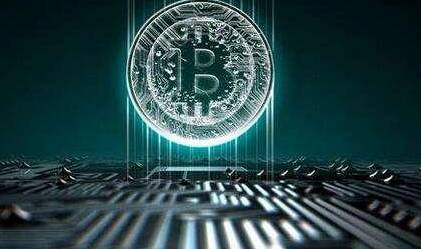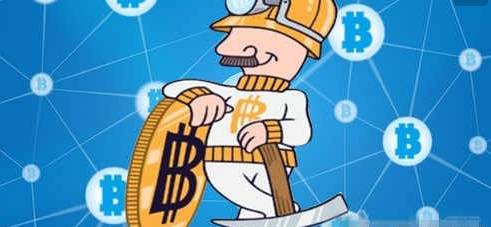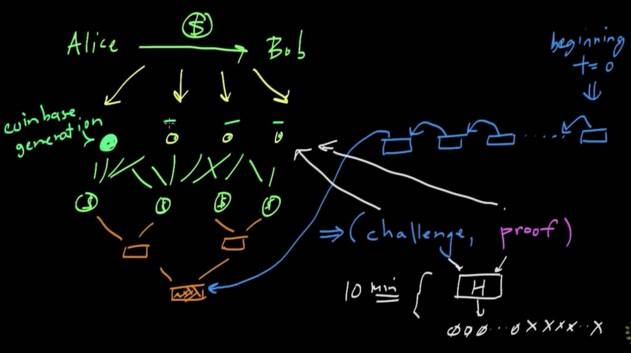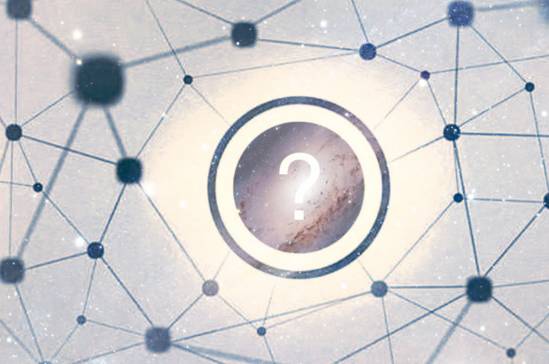How BLOCKCHAIN blocks you and chains others
Posted GossipShipping
tags:
篇首语:本文由小常识网(cha138.com)小编为大家整理,主要介绍了How BLOCKCHAIN blocks you and chains others相关的知识,希望对你有一定的参考价值。
编者按:比特币价格突破2万美元,Longfin在宣布收购区块链公司Ziddu.com后,一周内从5美元每股暴涨至72美元,最高达142美元,四个交易日最高涨幅27倍。
比特币、以太猫、马士基&IBM、甚至德州扑克线上游戏币……区块链对我们日常生活的渗透微不可查而又渐行渐近。
本文作者Stany,长期从事世界500强外企高管工作, 擅长IT技术与金融的结合应用分析。 GossipShipping获独家授权发布英文原版,如转载请注明出处。 
It has been a while that governments forbid transactions of Bitcoin, especially after the “Wanna Cry“ cyber attack using bitcoin as the ransom. Definitely if the attack comes again I will cry. Hot debates quickly spread across the world on whether we should or should not accept Bitcoin as one of the official currency. Governments’ worry is on the evil side that it’s anonymous and untraceable. So they can never control it. This will help bad guys do all the bad things easier. While those freedom zealots support them, as they believe it cannot be manipulated by any government for any good or bad purpose. Freedom will help the society civilized. Technology is always double edged, all depends on how you use it.
Set aside the good or bad and all the arguments, the technology used in Bitcoin - Blockchain has been widely studied. People believe this technology is going to start a new era. The revolution, it’s going to bring would just like the internet brings to us in last 30 years, if not, bigger. So what the hell is Blockchain and what issue it resolved that it’s so important? Let me try to share in 3 aspects:
What is it — the simple concept and mechanism as well as issues it resolved.
Options could be applied in a corporate world.
How it might change or disrupt logistics or supply chain.

1. What is Blockchain?

Literally, blockchain is a chain of blocks. What makes it so special is the way it is created. Each block contains a header and body. And the header comes from a special encryption calculation of the content from previous block. Thus, if you want to change the content of one block, you have to change the content of all the following blocks. And the whole chain is not stored in a central server group, nor owned by a specific company. The whole blockchain ( also called the ledger ) was distributed acrossthe internet. Every user ( or miner ) has a completed copy of the the whole chain ( starting from the genesis block). The rest of this chapter would be a little bit technical. So if you get bored by all these technology, just skip to the next chapter.
An important role in the blockchain is the miner, who is terally maintaining the blockchain. All the miners in the system are working very hard to find the answer. And the first one getting the answer wins. The winner will pack all the transaction data during that time frame ( around 10 min ) into a block and add a time stamp, then attach the block to the chain. The inventor of Bitcoin, Satoshi-san builds the mechanism in the source code that the reward of each block will cut half every 4 years due to the computation technology improvement to ensure the speed of average 10 minutes to generate one block maintained.

The first 4 years, every block generated, the miner was rewarded 50 Bitcoins, and 4 years later 25 … Also the total capacity of Bitcoin will be around 21 Million. This definitely no inflation will happen since nobody (organization, government ) can inject huge amount of money into the network and cause the depreciation of Bitcoin.
Since the whole chain is decentralized stored in the Peer-to-Peer (P2P) network, there are thousands of copies of the whole chain. If the system detects 2 different data setting, it will call the validation from the whole network, and the bigger number of data set wins ( e.g. we have 10 people in the room, No.1’s data is A while No.2’s is B, then it broadcasts to the room. If more than 5 people’s answer is A, then everyone agrees on A, the vice versa ). This makes the blockchain so robust that cannot be hacked, unless you can control 51% of the total number of computers' storing the blockchain. 
The beginning of the block body reserved some space for scripts. That means, you can program actions to be executed. When the input meets certain rules, related actions will be automatically triggered. This part was called the smart contract. And huge potential of applications are coming out of here, that it together with iOT will disrupt many industries. And the rest of the block bodies can be used to store any data — could be a transaction, could be a certification… could be anything you want to record forever. Till the end of the world that every storage in this planet is destroyed ( or maybe there are still some copies in the out-space ).
Now let’s talk a little bit more about the encryption and how it helps. It used a very secure algorithm ( called SHA-256 ) which the deciphering is almost impossible, although there is always racing between encryption and deciphering. So every time a new encryption came up claiming the safety, few years later, someone else came and crack it. And then new encryption algorithm was invented. If someday quantum computation becomes like our computer today, everything will change again. While based on current computing technology, it takes thousands of years for all the fastest computer in the world working together to crack 1. With this, the account is considered safe. Of course, the other side of safeis, if you forgot your password, nobody can help you. You lost everything you have in your account. Every account have 2 keys, one public key and one private key. Normally public key is a 34 digit codes also called the address. And private key is only known to yourself and required to do anything with your account (People can send money to our public account and you can use your private key to spend them ).

Sounds very complicated huh? Then why it is so hot. Because blockchain had resolved a very important issue - TRUST. This enable two party on the internet can transact without a third party. In current world,any transaction will involve a lot of parties, especially on internet. In off-line world, except for the good to good exchange, even you pay by cash, you are still involving bank who issuingthe cash to complete a transaction. Not to mention when you buy stuff from different on-line platforms. We always rely on someone else ( a company or an organization ) to ensure when we pay the money we receive the right goods, or when sell goods, we receive real money. Blockchain has well resolved the double spending issue. Also it records all transaction data, you can’t change it, neither erase it. This significantly increases the confidence of people having transactions with strangers. You can view their record, check their credit and then decide do transactions or not. And with the encryption, you can decide which part of your information will be disclosed. You will have more privacy.
And this figure, unleashes huge power of enabling transactions between people. It’s much safer than any centralized 3rd party. They can be hacked, they might have system error, their internal people might intentionally or unintentionally modify your data … they might have bottleneck, they might have capacity issue, they are vulnerable to attack. For the centralized platform, they will collect your data, and besides earning your money, they might also sell your privacy or use your personal data for their commercial purpose.
When internet came into world, it drastically reduced the cost of communication. TCP/IP is the protocol to enable different speed of system, different applications,different topologies or different network structures to talk to each other. Thus, in pass 30 years, the internet had totally changed our life. Blockchain being the TCP/IP of commercial world becomes the protocol of transaction. With smart contract, a lot of automation can be built in and drastically reduces the cost of transaction. This in return enables another wave of low value transactions which in previous world nobody would do due to not cost effective. Internet makes the world flat interms of communication, and blockchain will make the world flatter in terms of transaction.
2. How it works in a corporate world 
By theory and technology, it might be not that applicable to corporate, as corporate itself is centralized. This is already against the nature of blockchain.
There have been huge debates and fights between open and close. Taken the mobile world for an example, ios and android had a long fighting. At the beginning, iOS obviously takes advantage of the governance, the resource they invested and the experience they provided. iOS gave a better experience because they have to follow certain standard maintained by the fruit company,and of course they also charge a lot of money for providing such service. People or technology which does not meet the requirements of iOS, or maybe just not meeting their interests would not be able to load on the close environment. Android, on the opposite, they open the source code, everyone can add or change, modify to their specific need, optimize to be more efficient. Huge numbers of smart people in the world have been contributing in developing the OS, developing applications upon Android. The success of Wikipedia has proven the possibility of utilizing mass cooperation.
There is a suggestion to leverage blockchain to source from public of solutions. Utilizing people outside the company’s intelligence to resolve issues, complete projects for the company. People who contribute with the right criteria automatically gets pay ( using smart contract ). This might also change the way how a company organizes in the future. People might not only work for one company.
Some companies today are living in a fake high-tech era. They might have all the fancy word of latest technology yet running a super sports car on a bumpy and narrow road.They buy high power appliances and loaded on a low capacity circuit. Everytime, before turning on device, need to manually shut down the rest to ensure not to burn the power supply, and sometime they do burn. Simply install some servers in a room and every time you run an application, need to manually log in to a virtual machineis not “cloud”. At most, it’s still remote control. Without distributed computation, (the computing process should be transparent to users that you don’t know which machine is running this script and which one running the next ) purely virtual machine is not cloud computing, and you cannot fully utilize the computing resource like that.

In today’s corporate world, one of the biggest challenges is to fully utilize the talent of every single employee in the company. And for whatever reason, people only do what they were told to do. They work like a virtual machine. They are assigned dedicated roles, and perform certain tasks. When the tasks completed, and now new task, they sit idle. They need managers to assign them a new task, and trigger work again.
And managers want to keep things in control, while most of the time they become the bottleneck. Especially in technology part, they are running more like iOS, everything need to go through a project manager or a project team and they set up certain rules and “prioritize”, they control the development power. So every change goes through them and things get very slow.
Personally, I am more up for open source. And if can leverage blockchain concept and technology, the development or deployment of a project ( esp an IT project ) could be much faster, lower cost and more effective. We might still need a project team, but their main job is to build the infrastructure, to ensure enough bandwidth and computing capacity.
They might need to keep monitoring the progress as well as capacity. We have a lot of smart employee in each company, and if we build the right structure and motivation for them, they can definitely do a wonderful job. For example, we have automation projects, current way would be, the project team does everything, from business need analysis, UI design, coding, testing, initial UAT, invite users for final UAT, application deployment, debugging … And due to the constrain of coding resource, various requests will be pending on phase II, phase III … Then environment changes and things go on and on and never ended.
The future way could be the project team will define the basic infrastructure, the input and output, they build the backend database, they definite each field and they provide the API. They leave each team to come up their own way to automate the process, they can monitor the coding effectiveness and may introduce best practice across teams and provide necessary technical support.
People put their work on the blockchain, and if it meets criteria, they get the credit. Of course people can work for more than one project at a time. And the more work they do, the more credit they gain. This again could also change the future organization structure.
3. How will it change the supply chain?
 Let’s step out of the corporation, and take a glimpse on how it might impact the way we move things around.
Let’s step out of the corporation, and take a glimpse on how it might impact the way we move things around.
There are 3 movements in transactions: information movement, cash movement and goods movement. Today, we’ve had good enough infrastructure and technology to move information. And all the financial institutes have always be the early bird to leverage the latest technology.
By studying how financial institutes leverage technology to increase capacity, improve efficiency as well as reduce cost, we can easily migrate those concepts into logistic world. Both areas are as complicated. We have shipper, consignee, forwarder, different layers of agents, 3PL, 4PL … , and we can map them into a financial world, payer, recipient, bank, 3rd party payment, 4th party payment … Thus we can see that the application of those technology in financial world to move money can be migrated to move physical cargo.
Technology has kept reducing the friction of moving money and making it easier, faster and cheaper. As the cost goes lower and lower, which also makes a lot of transactions become meaningful. For example, if a fix fee of remittence costs 2 dollar, sending 2 dollar to another people is too costly. Even worse, if the recipient has to pay the transaction fee, it means nothing. While if the fix fee reduced to 1 cent, huge number of transactions below 2 dollar will take place. This also boosts the economy.
Don’t think 2 dollar is small, big portion of the world’s population are living below 2 dollar a day. Before, if you have 200 dollar to donate to100 poor people, the middle man eat them all, while today, they can get 1.98dollar. With the technology we have today, sending money to the other side of the globe could only take you few clicks within seconds.
Today, we go to dedicated agency to move our goods, also because of trust and cost issue. So what will happen if blockchain resolve these issues? Let’s refresh what blockchain brings to us. Firstly, blockchain remove the middle man, is no more required a “trusted third party”to enable the transition. Secondly, with smart contract it enables a lot of automation and drastically reduces cost. Thus, even some tiny transitions exist, it’s worthwhile to do.
Let’s take a look at how a typical cross-boarder sell completely. A lot of Chinese nowadays buy things from web-shops in other countries. They complete the buying online, so just few clicks. While the physical goods delivery takes a long route. The shop need to find a courier to deliver the good to a central hub in country. The hub ( normally another company other than the courier ), then consolidate with other goods to make it the bigger package ( or use a plate). They might then use a forwarder’s service to ship the plate. The forwarder further consolidates the plate together with others’ and places a booking with a carrier. Then the forwarder hires a trucking company to pick up a container and uses another agency’s labor to stuff the container. Then the trucking company comes back to pick up the container and sends it to a terminal. The carrier ships the container to China and something happened in reverse sequence. Finally, the goods arrive the buyer’s home and s/he goes on-line to complete the transaction.
How this is going to look like with blockchain? With blockchain, anyone can be part of the process: the shop owner just need to publish the status that a parcel need to be delivered to another place ( could be another county and let’s take this as example ). He inputs the detail of the package including commodity name, volume, weight, dimension and estimate day of delivery. At the same time 3 people just happen to pass by the shop and they all open up an APP of “Move Goods”. Then they input their offer and waiting for the result:
A. a Starbucks employee just got off work, he lives near one of the central hub.
B. a driver of a forwarder, he can bring the package back to office and consolidate with other goods.
C. a traveller who will return to the destination city in 3 days.
Few minutes later, based on the rules set in the smart contract, c gets the deal. He walks into the shop and do the proper handover with the owner, he checks and picks up the package, then leave. Few days later, c arrives at the city and open the APP again, this time, he is the buyer of delivery service. Similar things happen and a nearby driver comes and picks up the package,delivers it to the address of buyer and put it in the smart locker. The buyer receives a message of access code of smart locker and she picks it up on her way home. Every single step, the status is updated in the APP and stored in blockchain. The buyer can check status any time. Everyone handling the package earns their respective payment.
There are 2 contradictory theories coexist in the commercial world: the Pareto rule ( also called the 80/20 rule ) and the longtail theory. Whenever new technologies introduced to reduce the cost, bigger profitable opportunity comes up. It boosts the industry again. Longtail includes all the variation with small number of volume. When cost is high, nobody wants to deal with them. Think about the example above, how many handovers are involved in delivering a package from A to B. And if the handing and handover cost is high, it would cause the final price too high and hence stop the transaction.
Nowadays, one of the headache for many companies are small business owners. They brings all kinds of variation with small volume each. They are very cost sensitive that require competitive price, but each of them can only contribute a very small volume. Yet the total base of this group is huge, and they are growing. Taking it or leaving it is always a dilemma. With iOT and blockchain smart contract, a lot of handling cost will be eliminated. Moving things around will be easier and much cheaper. Today, a sports company produces their shoes in China and ships to their shops all over the world. The shipping cost for 1 pair of shoes from China to their shops in Europe would only cost less than 1 USD. While if you buy it online and ship it back to China may cost you more than 20 Euro. With blockchain the shipping cost may be reduced to similar level.
With Blockchain, the cost of building trust will be significantly reduced. The focus for service providers ( carriers, trucking companies, consolidators, terminals … ) will be improving product ad service quality ( fast, on time, error free, low pollution … ) and reducing cost. Winning a deal will be purely based on the predefined rules built in a smart contract. Sales cost will be significantly reduced or even eliminated. Best fit wins out as the cost to find the best fit has been almost eliminated.
Blockchain will remove the middle man and bring shipper and carrier together, just like internet removed distributors and brings buyers directly to the manufacturers.
 打赏并在评论区留下您的电子邮箱,
打赏并在评论区留下您的电子邮箱,
雅赠PDF原文一份。
以上是关于How BLOCKCHAIN blocks you and chains others的主要内容,如果未能解决你的问题,请参考以下文章